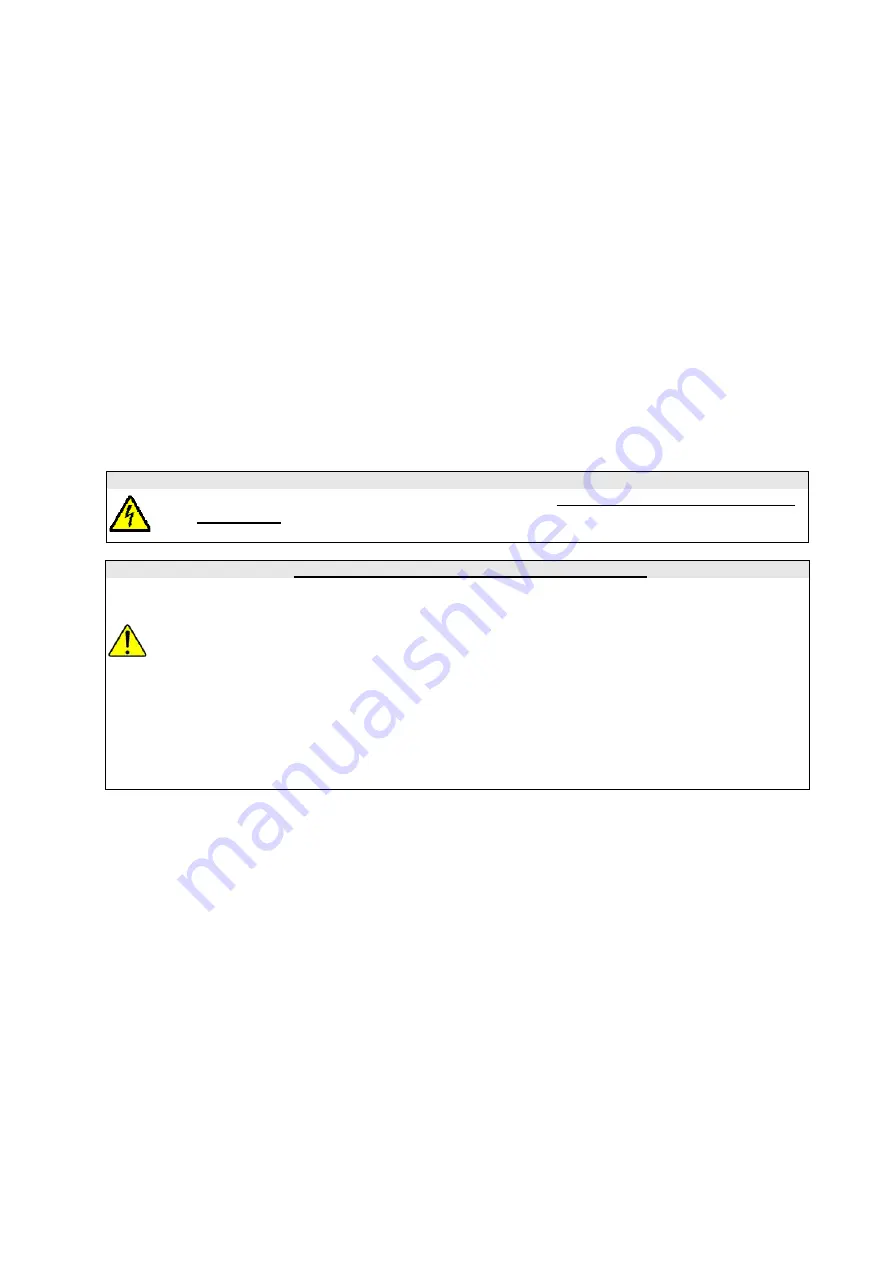
Pag. 49 a 83
0MLMHTK65RUENUB
Start-up procedure
Before starting up the whole system for the first time, some tests have to be performed to check that the UPS’s are
connected to each other correctly.
A) Open all the switches and disconnects on the UPS’s (SWIN, SWBY, SWOUT and SWMB) and on the battery
cabinets.
B) Close SWMB on one unit and check that on all the units:
The voltage present between the corresponding input and output terminals (L1-L1, L2-L2, etc.) of each
UPS is <2Vac. If not, check that the UPS’s are connected to each other correctly.
Once the test is completed, open SWMB.
C) Start up UPS1 by closing SWIN, SWBY and SWOUT. After a few moments, messages on the UPS status will
start to scroll across the first line of the display panel. This will include the following message regarding the battery
connection:
Low Bat Charge or Close FBAT
D) Close SWIN, SWBY on all the other UPS’s.
E) Check that all the parallel-connected UPS’s are on.
Close the circuit breaker/disconnect on the battery cabinets
only when the following message is no
longer shown
on the first line of the display panel:
Wait: DO NOT connect the BATTERY
FOR OPERATION WITH A SINGLE BATTERY ONLY
Check the letter “X” on the second line of the display panel:
Example: “UPS type”, “X” OUT=YYY%VA, BATT=YYY%Ah, 5=ON(or OFF)
Note: the UPS with a capital “X” (B or P) is the MASTER unit
The “X” on the MASTER unit may be:
X= B, the parallel battery code has already been inserted.
Only the battery capacity value has to be inserted (see below).
X= P the parallel battery code must be inserted by pressing keys 3, 5 in sequence on the control
panel and the code 467123 (repeat the same sequence to disable the parallel).
The UPS’s connected to the one in which the code is inserted will be automatically configured through the
parallel cable (the letter “b” will be displayed on all the UPS’s).
This configures the value of the battery capacity only;
this value must be inserted on the MASTER
UPS, which will send the information to the other units via the signal cable.
F) Close SWMB of UPS 1 and check that the whole system switches onto the bypass line (the bypass LED on UPS1
will flash while it must be on steady on the other UPS’s), then open switch SWMB again. Wait a few seconds then
check that the UPS1 returns to “NORMAL OPERATION”. Repeat this operation for the other units connected.
If this check is positive, close SWOUT on all the units. Replace the switch block on all the SWMB’s so that they
are blocked in the open position. The red levers allow for installation of padlocks.
G) At the end of the start-up phase, all the UPS’s must be in the “NORMAL OPERATION” condition.
H) Wait approx. one minute from the insertion of the last UPS, then check that with the load not connected the
output power indicated by each unit is <3%.
I) Connect the load to the output, wait approx. one minute and then check that the power shared between the various
units is within ±2%.
















































